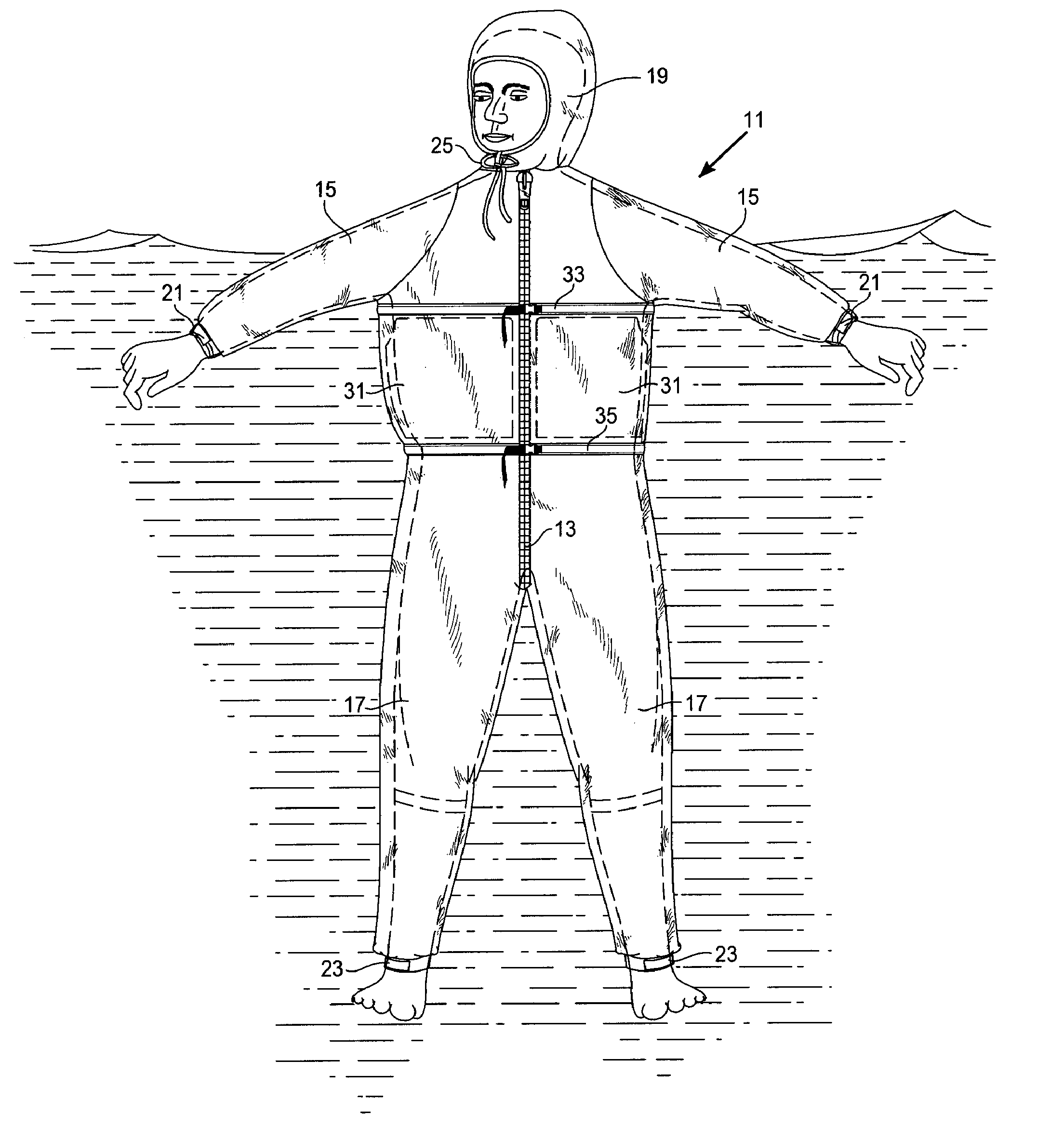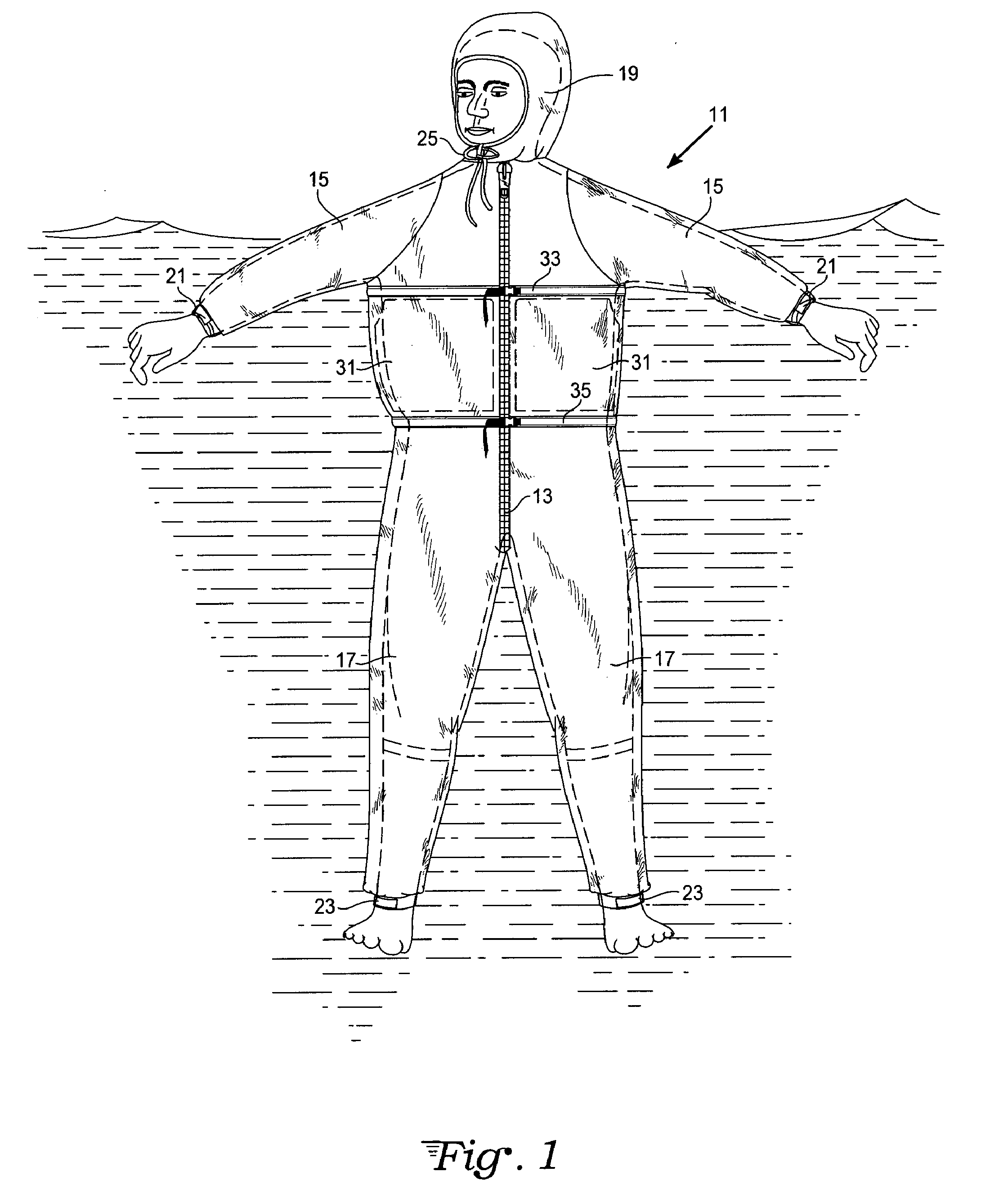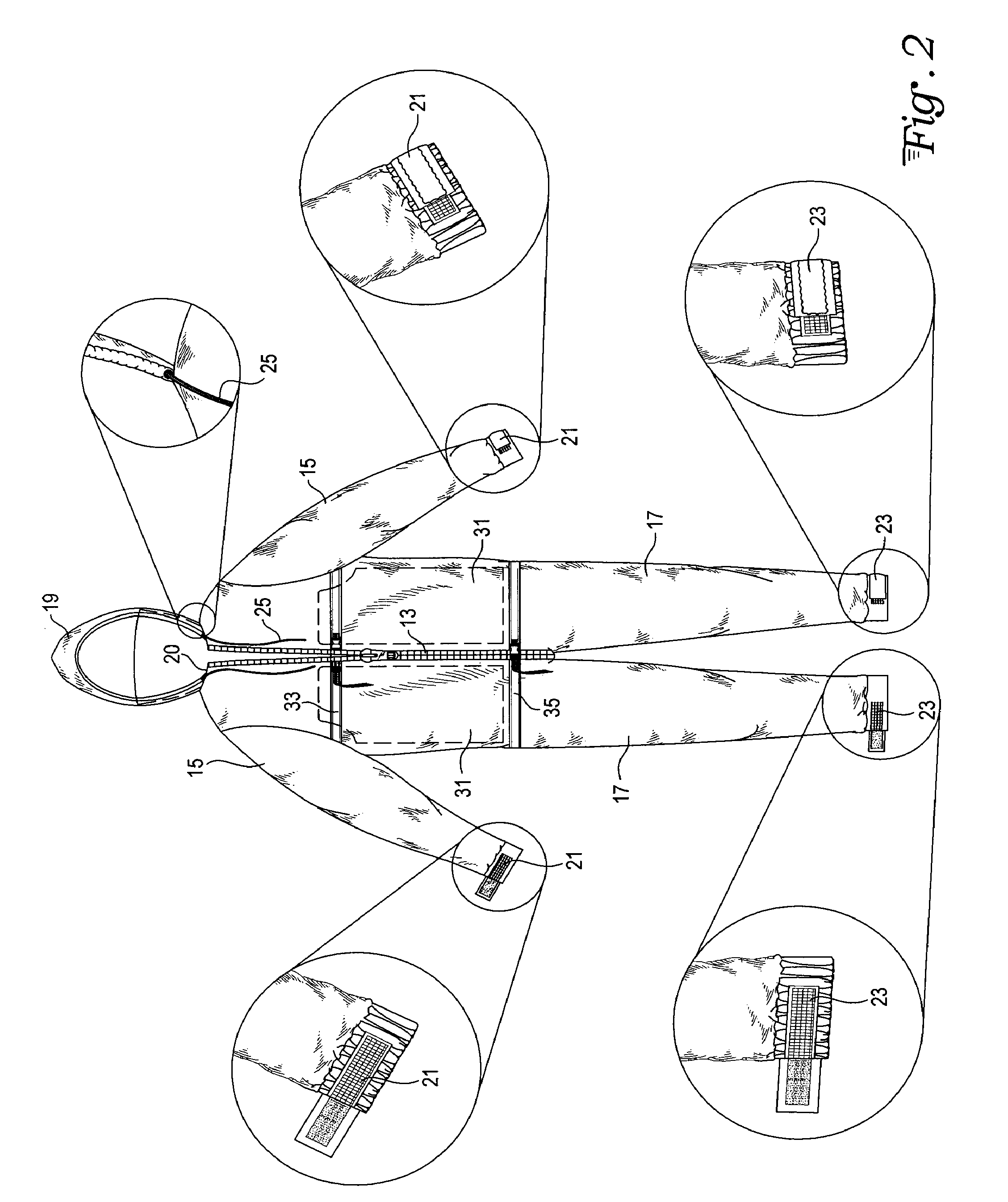Thermally protective survival garment
a survival garment and thermal protection technology, applied in the field of cold water survival equipment, can solve the problems of difficult placement, less free movement, thermal protection, etc., and achieve the effect of limiting water circulation and good thermal protection
- Summary
- Abstract
- Description
- Claims
- Application Information
AI Technical Summary
Benefits of technology
Problems solved by technology
Method used
Image
Examples
Embodiment Construction
[0022]With reference to FIG. 1, a thermally protective floatation device 11 having a plurality of water trapping regions is shown. The device is a coverall garment with a zipper closure fastener 13 extending from crotch to neck. The coveralls may be made of selected water impervious materials such as Tyvek™, neoprene, rip-stop nylon, or water impervious polyester. The coveralls are similar to hazardous materials coveralls, fitting snugly over regular clothing but should not be too loose. The coveralls should be easy to don, allowing for free movement of arms and legs. Material that is slightly leaky to water, such as wetsuit material, is also acceptable and included within the definition of “water impervious”. Tyvek is a registered trademark of the Dupont Company for a non-woven spun olefin fiber sheet material. The material is difficult to tear and is water impervious. Tyvek coveralls are known to be one-piece jumpsuits sometimes worn by mechanics, printers, painters, or persons ha...
PUM
 Login to View More
Login to View More Abstract
Description
Claims
Application Information
 Login to View More
Login to View More - R&D
- Intellectual Property
- Life Sciences
- Materials
- Tech Scout
- Unparalleled Data Quality
- Higher Quality Content
- 60% Fewer Hallucinations
Browse by: Latest US Patents, China's latest patents, Technical Efficacy Thesaurus, Application Domain, Technology Topic, Popular Technical Reports.
© 2025 PatSnap. All rights reserved.Legal|Privacy policy|Modern Slavery Act Transparency Statement|Sitemap|About US| Contact US: help@patsnap.com



